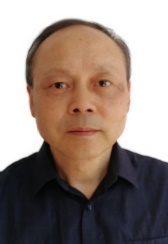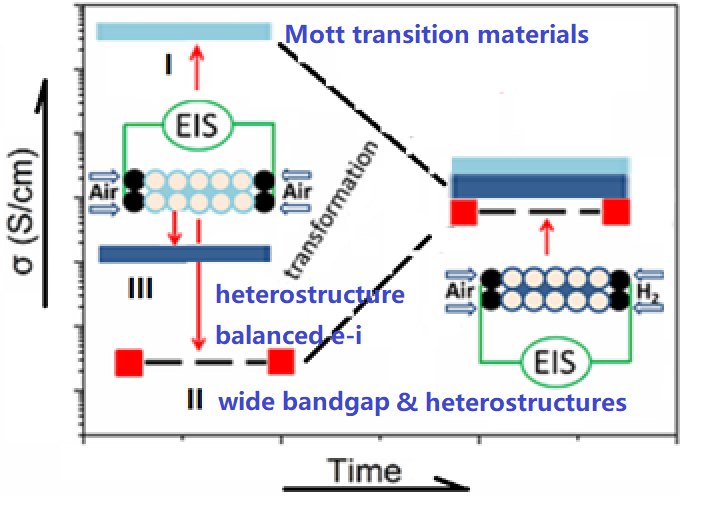

Prof. Bin Zhu

Prof. Bin Zhu
Jiangsu Provincial Key Laboratory of Solar Energy Science and Technology/ Energy Storage Joint Research Center, Southeast University, China/Loughborough University, UK
Speech Title: Semiconductor-based superionic conductors for new generation fuel cell applications
Abstrat
Recent research and development on semiconductor-based superionic conducting membranes which can act alternative electrolytes are a new trend in low temperature solid oxide fuel cell (SOFC) and proton ceramic fuel cell (PCFC). This can be traced from a radical new invention of single-layer fuel cell (SLFC) or electrolyte-free fuel cell (EFFC), i.e. one semiconductor-ionic component instead of anode/electrolyte/cathode three components can realize fuel cell technology [1, 2]. Such semiconductor-ionic materials (SIMs) can integrate the functionalities of fuel cell’s anode, electrolyte, and cathode into one component. This could represent a major progress in fuel cell science and technology and lies grounds for a new direction of fuel cell R&D and commercialization.
Solid oxide fuel cell (SOFC) technology depends on the electrolyte, yttrium stabilized zirconium (YSZ), but it requires a temperature over 700 °C to operate properly due to requirement of sufficient ionic conductivity. The situation could now be improved if replacing YSZ with a SIM with high ionic conductivity to develop new science and technology: Semiconductor-ionic fuel cells (SIFCs). The SIFC may demonstrate high performance at temperatures well below 550°C [3, 4].
Current SIMs may be classified into three types as schematically presented in Figure 1: I) Single phase semiconductors, e.g. perovskite and layered structured oxides, SmNiO3, LiCoAlO2, LiNiFeO2, etc. [5-7] These semiconductors have shown metal or high electronic (hole) conductivity to experience a transition to ionic conduction by proton insertion from fuel cell operation; II) Oxygen deficit oxides, typically as fluorite structure CeO2-d. The CeO2-d can change from insulating or electronic conduction to a proton conductor in the fuel cell operation [8];

Figure 1 According to band structures there are three classes of the semiconductor-based superionic conductors
III) Both semiconductor and ionic conduction form a two-phase heterostructural composite, where percolation of both electron and ion conducting paths result in comparable or balanced electronic and ionic conduction [3, 4, 9].
Recent Publications (minimum 5)
1.B. Zhu, R. Raza, G. Abbas, M. Singh (2011) An Electrolyte-Free Fuel Cell Constructed from One Homogenous Layer with Mixed Conductivity. Advanced Functional Materials 21: 2465-2469
2. B. Zhu, R. Raza, H. Qin, Q. Liu, L. Fan (2011) Fuel cells based on electrolyte and non-electrolyte separators. Energy & Environmental Science 4: 2986-2992.
3. B. Zhu and P. Lund et al (2016) Novel fuel cell with nanocomposite functional layer designed by perovskite solar cell principle. Nano Energy 19: 156-164.
4. B. Zhu and P. Lund et al (2015 Schottky junction effect on high performance fuel cells based on nanocomposite materials, Adv. Energy Mater. 5: 1401895.
5. R. Lan, S. Tao (2014) Novel Proton Conductors in the Layered Oxide Material LixlAl0.5Co0.5O2. Advanced Energy Materials 4: 1301683.
6. Y. Zhou and S. Ramanathan et al (2016) Strongly correlated perovskite fuel cells. Nature 534, 231-238
7. Bin Zhu et al (2016) ![]() LiNiFe-based layered structure oxide and composite for advanced single layer fuel cells, J. Power Sources 316: 37-43.
LiNiFe-based layered structure oxide and composite for advanced single layer fuel cells, J. Power Sources 316: 37-43.
8. Y. Xing, Y., Wu, L. Li, Q. Shi, J. Shi, S. Yun, B. Zhu (2019) Proton Shuttles in CeO2/ CeO2-δ Core-Shell Structure. ACS Energy Letters, 4: 2601-2607
9. Chen Xia, Youquan Mi, Baoyuan Wang, Bin Lin, Gang Chen, Bin Zhu, Shaping triple-conducting semiconductor BaCo0.4Fe0.4Zr0.1Y0.1O3-δ into an electrolyte for low-temperature solid oxide fuel cells, Nature Communications, 2019, 10:1707
Biography
Bin Zhu, M.Sc., in 1987 from University of Sci. & Tech. of China; PhD in 1995 from Chalmers University of Technology, Sweden; Postdoc. 95-98 in Uppsala University (Ångström Lab). Dr. Zhu then moved to KTH and became associate professor. He is currently visiting professor in Loughborough University, UK and lecturer professor in Xian Jiaotong University, China. From 2020, he joined South University appointed as Scientific Director of Center for energy research, School of Energy and Environment, Southeast University, China
Zhu has H-index 53 (@ google scholar) and citation over 10000. He is one of the Most Cited scholars in China (Energy sector, Elsevier) continuously every year since 2014-. In the latest Stanford University released the "world's top 2% scientists list" 2% Scientists 2020). The list is divided into "lifetime science influence ranking" (1960-2019) and "science influence ranking in 2019". Zhu has been selected into the double list.
